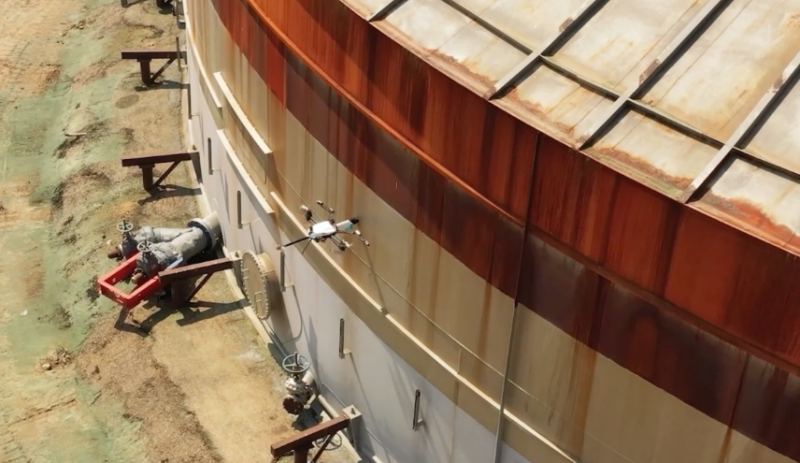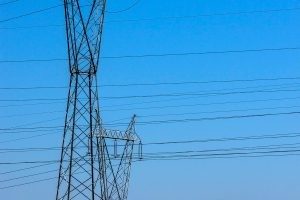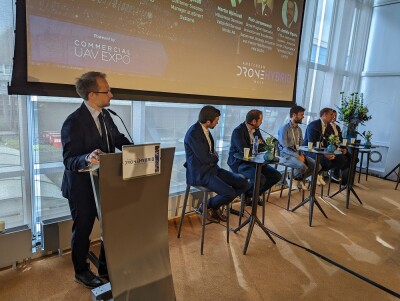The energy industry has been a pioneer in the adoption of robotics and UAVs, recognizing their potential for enhancing operational efficiency, safety, and cost-effectiveness. Due to the hazardous and often inaccessible nature of many energy sector environments—such as offshore oil rigs, high-voltage power lines, and sprawling solar farms—robots and UAVs have the potential to become indispensable tools for inspections and maintenance. These technologies allow for rapid, precise monitoring and data collection without putting human workers at risk. Their early integration into the energy industry set a precedent for their use in other sectors, showcasing their ability to transform traditional workflows and address complex logistical challenges.
Hosted by the Energy Drone & Robotics Coalition (EDRC), the 2024 Energy Drone and Robotics Summit brought together stakeholders, end users, and vendors to discuss and showcase their solutions, as well as to provide a snapshot of the industry’s adoption of the technology. Below are a few impressions and takeaways that may define the space in the years ahead.
Pushing for zero-incident operations
The Energy Drone & Robotics Summit's extensive focus on drone exhibitors and related technologies underscores the oil and gas industry's robust commitment to achieving zero-incident operations. This dedication is demonstrated by the cutting-edge drone solutions showcased in both content sessions and the show floor. Many of the companies featured UAS platforms designed to mitigate risks inherent in oil and gas operations, such as pipeline inspections, rig maintenance, and facility monitoring. By integrating drones into their safety protocols, companies can conduct thorough inspections of hard-to-reach and hazardous areas without exposing workers to dangerous conditions, thereby reducing the likelihood of accidents and injuries.
The summit highlighted how drones not only enhance operational efficiency but also play a crucial role in early hazard detection and proactive maintenance, key factors in preventing incidents. The industry's proactive embrace of these technologies reflects a broader cultural shift towards prioritizing safety, regulatory compliance, and environmental stewardship, ultimately aiming for a zero-incident operational framework. This emphasis on innovation and safety at the summit demonstrates a clear commitment to safeguarding both human life and the environment in one of the most high-risk industries.
Non-destructive testing via drone
Perhaps one of the most interesting, from a technical perspective, is the proliferation of several drones and payloads that are aimed at exploring the capabilities of non-destructive testing (NDT), including ultrasonic thickness measurements and thermal cameras, or other advanced payloads.
In the case of Voliro, this is done via contact where the drone extends a specific payload to a pipe, tank or other piece of infrastructure and utilizes “pulsed eddy current” (PEC) technology - essentially short, high-energy electromagnetic pulses - to penetrate through materials and coatings to reveal structural flaws.

These newer capabilities are now combined with the already significant safety and access benefits afforded by drones - and have the potential to have far-reaching impacts, especially for owners of assets where monitoring the status of critical infrastructure is paramount.
Sensors are specializing
Moving beyond imagery and lidar, specialized sensor payloads continue to pop up as more applications are identified. In the highly specific industries of oil and gas, their needs are equally as specific, from finding leaks and hidden hazards to identifying potential maintenance issues before they become major problems. Several of these sensors were mentioned in a session hosted by Volatus Aerospace, featuring a variety of real-world use cases.
Just a few mentioned at the conference and on the exhibit floor included:
- Optical Gas Imaging (OGI) is emerging as a tool for leak detection as well as regulatory compliance. OGI sensors are capable of scanning for dangerous or environmentally hazardous gas leaks.
- Methane Sniffer technology can not only detect a leak but help to quantify and measure its extent.
- Magnetometers that measure magnetic fields can be used for a variety of metal-detection use cases, and even to find pipes and other underground infrastructure. Locating abandoned wells, pipes and storage tanks can be incredibly cost-saving when identifying sites for future development.
- Corona emission detection - this unique sensor can detect electrical discharges using ultraviolet imaging, which can detect electrons and ions from an arc or corona. Usually difficult to detect visually or otherwise, visualizing and identifying unwanted discharges could be a help to any company working regularly with high voltage.
These technologies, highlighted throughout the summit, demonstrate a pivotal shift towards achieving zero-incident operations and optimizing maintenance and inspection processes. The emphasis on non-destructive testing, specialized sensors, and the integration of drones into hazardous environments reflects a broader industry trend of prioritizing safety and maximizing the efficiency and repeatability of measurements. Ultimately, this could lead to increased inspection frequencies, revised protocols, and a more proactive approach to operations across these critical industries.
















Comments